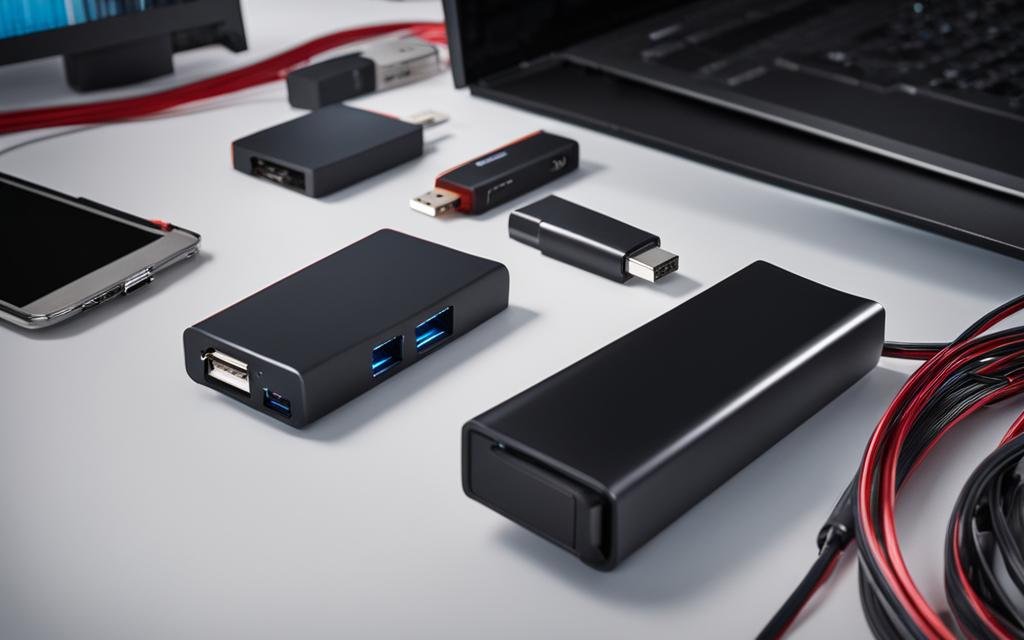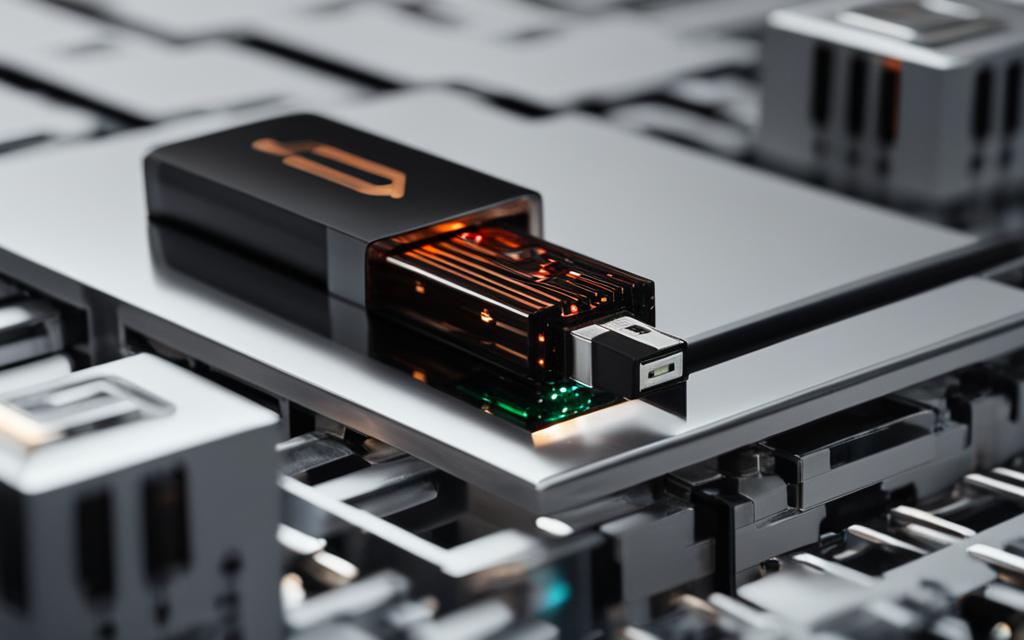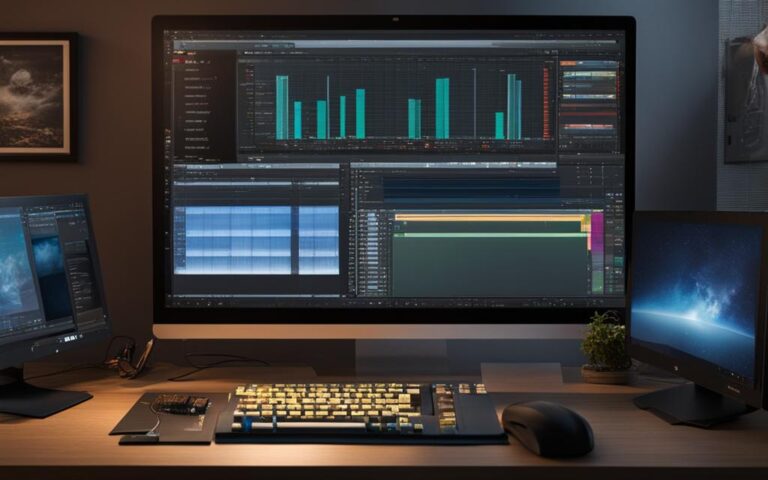Are you tired of using traditional installation methods for your operating system? Do you want a faster and more convenient option for installing an OS on your computer? If so, creating a bootable USB drive may be the perfect solution for you. In this section, we will guide you through the step-by-step process of creating a bootable USB drive that you can use to install an operating system on your computer. With this guide, you’ll be able to create a bootable USB drive effortlessly with the necessary tools and materials and install the operating system smoothly.
First, let’s understand why a bootable USB drive is essential for installing an operating system. A bootable USB drive enables you to start your computer from the USB instead of the traditional CD/DVD method. This method is faster, more convenient, and often required for newer devices that lack an optical drive. By the end of this guide, you’ll be able to create a USB bootable drive, install an operating system, and make a bootable USB effortlessly.
Understanding the Importance of a Bootable USB Drive
Before we dive into the steps, let’s first understand why a bootable USB drive is essential for installing an operating system. A bootable USB drive allows you to start your computer from the USB instead of the traditional CD or DVD method. This method is faster, more convenient, and often required for newer devices that lack an optical drive.
To perform this process, you need to create a USB bootable drive. Having a USB bootable drive allows you to install an OS from USB, making it a valuable tool for anyone who needs to perform a clean installation of an operating system. A USB bootable drive is also useful for system administrators who need to create a USB installer, a bootable drive that includes an operating system and other essential software.
Creating a USB bootable drive is not only efficient, but it can also save you time and money. When you create a bootable USB drive, you no longer need to purchase expensive installation CDs or DVDs. You can use the same USB drive repeatedly to install an OS on multiple devices.
This USB installation guide provides detailed instructions on how to create a bootable USB drive and install an operating system from USB. Keep reading to learn more!
Gathering the Necessary Tools and Materials
Before you can create a bootable USB drive, you’ll need to gather a few tools and materials. Here’s what you’ll need:
- A USB drive with at least 8GB of storage capacity.
- The operating system installation files or an ISO image of the OS.
- A computer with administrative privileges and internet access.
Once you have these materials, you’re ready to get started creating your USB installer. Keep in mind that creating a live USB can be time-consuming, so be sure to set aside enough time for the process.
Now that you have everything you need let’s move on to formatting your USB drive in the next section.

Formatting the USB Drive
Now that you have gathered all the necessary materials, it’s time to format the USB drive to make it bootable. Here’s how to make a USB bootable:
- Connect the USB drive to your computer.
- Open the Disk Management tool by pressing Windows+X and clicking on Disk Management.
- Locate your USB drive in the list of drives and right-click on it. Select “Format.”
- In the Format window, choose the file system that is compatible with your computer. If you’re not sure which file system to choose, select NTFS.
- Enter a name for your USB drive in the “Volume Label” field.
- Ensure that the “Quick Format” option is selected and click “Start.”
- The formatting process may take a few minutes. Once it’s complete, your USB drive is ready to be made bootable.
Keep in mind that formatting the USB drive erases all data on the drive, so make sure to back up any important files before proceeding.
Once the USB drive is formatted, you’re ready to move on to the next step in creating a bootable USB drive.
Creating a Bootable USB Drive using Command Prompt
Once you have formatted your USB drive, it’s time to create a bootable USB drive using Command Prompt. Follow the steps below:
- Open Command Prompt as administrator. To do this, right-click on the Windows start menu and click on “Command Prompt (Admin)”.
- Type ‘diskpart’ and press Enter to open Diskpart, a command-line disk partitioning utility.
- Type ‘list disk’ and press Enter to display a list of all connected storage devices. Identify the disk number of your USB drive, which should be listed as “Disk 1”, “Disk 2”, etc.
- Type ‘select disk X’ and press Enter (replace “X” with the disk number of your USB drive).
- Type ‘clean’ and press Enter to erase any existing data on the USB drive.
- Type ‘create partition primary’ and press Enter to create a new primary partition on the USB drive.
- Type ‘select partition 1’ and press Enter to select the new partition.
- Type ‘active’ and press Enter to make the partition active.
- Type ‘format fs=ntfs quick’ and press Enter to format the partition in NTFS file system, which is required for a bootable USB drive (you can also use FAT32 file system if required).
- Type ‘assign’ and press Enter to assign a drive letter to the USB drive.
- Type ‘exit’ and press Enter to exit Diskpart.
- Type ‘cd X:\[folder]’ and press Enter (replace “X” with the drive letter of your USB drive and “[folder]” with the path to the folder containing the operating system installation files).
- Type ‘[driveletter]:\boot\bootsect.exe /nt60 [driveletter]:’, replacing “[driveletter]” with the letter assigned to the USB drive, and press Enter to prepare the USB drive for booting.
Your bootable USB drive is now ready to install the operating system on your computer.
Creating a Bootable USB Drive using Third-Party Software
If you prefer a more user-friendly approach, third-party software provides an easy way to create a bootable USB drive. Here are two popular software options:
- Rufus: This free software is an excellent choice with a simple, user-friendly interface. Follow these steps:
- Download and launch Rufus.
- Insert your USB drive and select it under the “Device” section.
- Under the “Boot selection” section, click on the “Select” button and browse to the operating system ISO image file.
- Ensure the partition scheme is set to “MBR” for BIOS or “GPT” for UEFI systems.
- Click on “Start” to begin creating the bootable USB drive.
- UNetbootin: This software is available for Windows, macOS, and Linux operating systems and is also free to use. The steps for creating a bootable USB drive with UNetbootin are:
- Download UNetbootin and launch the software.
- Insert your USB drive and select it from the “Drive” dropdown menu.
- Under “Distribution,” select the operating system you want to create a bootable USB drive for.
- Browse to the ISO file of the operating system, if it isn’t automatically detected by the software.
- Click on “OK” to start creating the bootable USB drive.
Once the software has finished creating the bootable USB drive, follow the verification and installation steps outlined in the previous sections to ensure a successful installation.
Verifying the Bootable USB Drive
After creating the bootable USB drive, it’s important to verify its integrity to ensure a successful installation. Here’s how to perform a verification process:
- Insert your bootable USB drive into your computer.
- Open File Explorer and right-click on your USB drive. Select “Properties.”
- Click on the “Tools” tab and select “Check” under the “Error checking” section.
- Click “Scan drive” and wait for the process to complete.
- If no errors are found, your USB drive is ready for use as a bootable installer.
It’s important to verify your bootable USB drive to make sure that the installation process won’t fail due to any errors. If errors are detected during the verification process, try creating a new bootable USB drive using the same method or a different one as described in section 5 or 6.
Booting from the USB Drive
Now that you have created a bootable USB drive, it’s time to boot your computer from it to initiate the installation process. Follow the steps below to change the boot order in your computer’s BIOS or UEFI settings:
- Insert the bootable USB drive into the appropriate port on your computer.
- Restart your computer.
- During startup, press the key that appears on your screen to enter the BIOS or UEFI settings. The key varies depending on the computer manufacturer, but it is usually F2, F10, or Delete.
- Navigate to the Boot menu using the arrow keys on your keyboard.
- Use the arrow keys to move the bootable USB drive to the top of the boot order list.
- Save the changes and exit the BIOS or UEFI settings by pressing the appropriate key (usually F10).
- Your computer will now restart again and boot from the USB drive.
Once your computer successfully boots from the USB drive, the installation process will begin. Follow the on-screen instructions to install the operating system onto your computer.
Tip: If your computer doesn’t boot from the USB drive, double-check that you correctly changed the boot order in the BIOS or UEFI settings. You may also need to enable the “Boot from USB” or “Boot from External Devices” option in the settings.
Installing the Operating System from the USB Drive
Congratulations! You have successfully created a bootable USB drive, and now it’s time to install the operating system on your computer. Follow the steps below to ensure a smooth and error-free installation process:
- Insert the bootable USB drive into your computer’s USB port and restart the computer.
- During startup, press the key that takes you to your computer’s BIOS or UEFI settings. The key may vary depending on your computer’s make and model, but commonly used keys are F2, F10, and Delete. Refer to your computer’s user manual for guidance on accessing BIOS or UEFI settings.
- Once you access the BIOS or UEFI settings, look for the option to change the boot order, typically located under the “Boot” or “Startup” tab. Change the boot order to prioritize the USB drive, save changes, and exit the settings.
- Your computer will now boot from the USB drive, and the operating system installation process will begin. Follow the on-screen instructions, including selecting the language, time zone, and installation location. You may also be prompted to enter the activation key for your operating system, so make sure to have it handy.
- Wait for the installation process to complete, which may take anywhere from a few minutes to a few hours, depending on the operating system and your computer’s specs.
- Once the installation is complete, remove the USB drive and restart your computer. Congratulations! You have successfully installed the operating system using a bootable USB drive.
It’s worth noting that some operating systems may require additional drivers and software to be installed after the initial OS installation. Refer to the operating system documentation for guidance on installing additional software, such as device drivers or application software.
Troubleshooting Common Issues
Despite careful preparation and following our guide, installation issues can still arise when installing an operating system from a USB bootable drive. Here are some common problems you may encounter and troubleshooting tips to help you resolve them:
1. The computer isn’t booting from the USB drive
If your computer isn’t booting from the USB drive, double-check that you’ve correctly changed the boot order in your BIOS or UEFI settings. Make sure that the USB drive is plugged in and detected. Try restarting the computer and pressing the key that brings up the boot menu. If none of these options work, your USB drive may not be bootable, or your computer may not support booting from USB at all.
2. The installation process is taking too long
If the installation process is taking longer than usual, it may be due to a slow USB drive or a slow computer. Check the USB drive and make sure that it meets the minimum requirements for speed. Try closing any unnecessary programs or background processes that may be interfering with the installation process. If none of these solutions work, it may be a hardware issue with your computer.
3. The installation process encounters errors
If the installation process encounters errors, try restarting the installation process from scratch. Make sure that the operating system installation files or ISO image are not corrupted. If you’re using third-party software to create the bootable USB drive, make sure that it’s reputable and up-to-date. If you continue to encounter errors, consult the operating system’s documentation or support forums for further assistance.
4. USB drive isn’t recognized during the installation process
If the USB drive isn’t recognized during the installation process, try removing and reinserting the USB drive. Check that the USB port is functioning correctly and that the USB drive is properly formatted. If you’re still encountering issues, it may be due to a hardware problem with the USB drive or the computer, or the operating system may not be compatible with the USB drive.
By following our troubleshooting tips, you can overcome common issues and successfully install an operating system from a USB bootable drive. Remember to always back up important data before installing a new operating system, and don’t hesitate to seek further assistance if needed.
Final Thoughts
By now, you have successfully created a bootable USB drive and installed an operating system on your computer using our comprehensive guide. We hope that this USB installation guide has provided you with a clear understanding of the process and enabled you to do it yourself with ease.
Creating a Live USB
You can also use the same process to create a live USB, which allows you to try out an operating system without installing it on your computer. This is an excellent option if you want to test the compatibility of an operating system with your hardware before committing to a complete installation.
To create a live USB, follow the same steps outlined in this guide, but instead of selecting the installation option, choose the “Try” option when booting from the USB drive.
Enjoy the Benefits of a Bootable USB Drive
A bootable USB drive is an essential tool for anyone who needs to install an operating system quickly and efficiently. With this USB installation guide, you can now create bootable USB drives with ease and confidence, without the need for any additional support or assistance.
We hope that this guide has been helpful and that you now have a better understanding of how to create a bootable USB drive for installing an operating system. Remember to keep the necessary tools and materials handy, and always verify the integrity of your USB drive before installing the operating system.
Thank you for reading this guide and happy USB installing!







